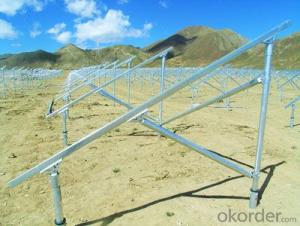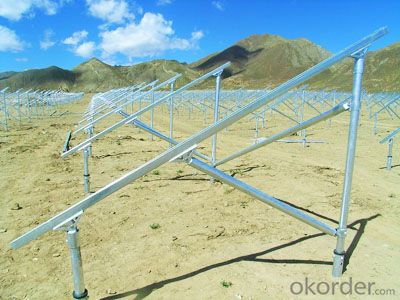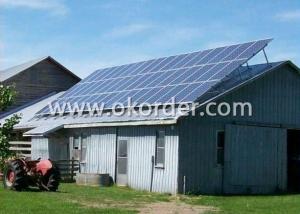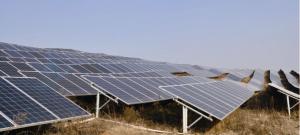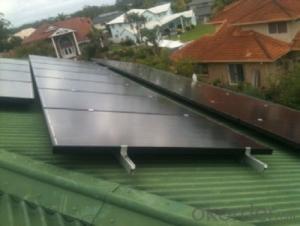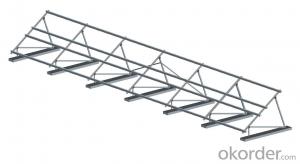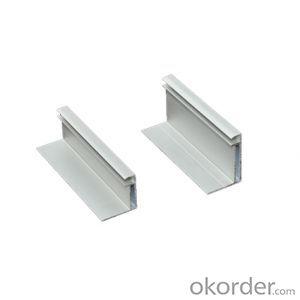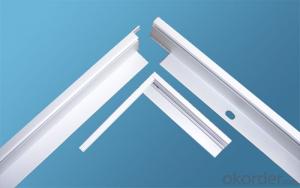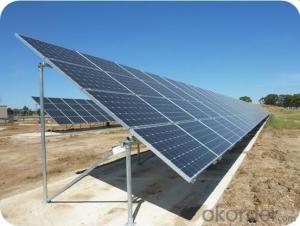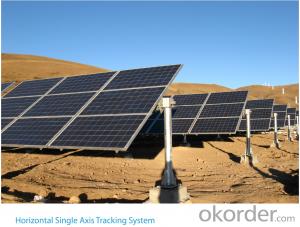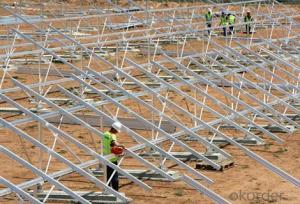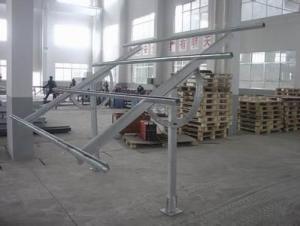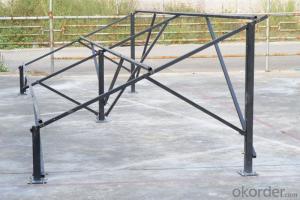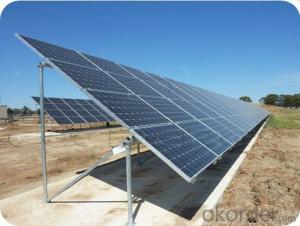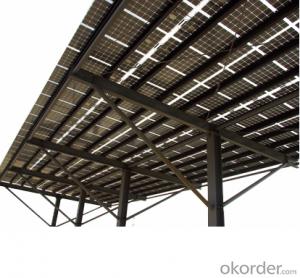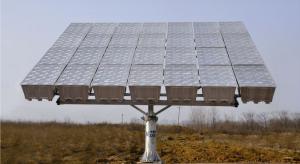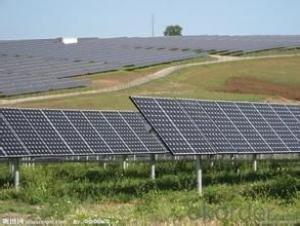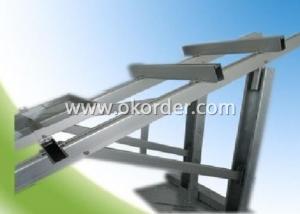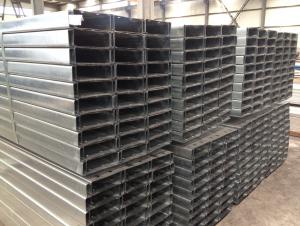Best Solar Mounting System - TT-TK-S02A Solar Panel Mounting
- Loading Port:
- Shanghai
- Payment Terms:
- TT OR LC
- Min Order Qty:
- -
- Supply Capability:
- 50万套 set/month
OKorder Service Pledge
OKorder Financial Service
You Might Also Like
PV Mounting brackets are special solar photovoltaic systemfor placing, installing, fixing the solar panel design. Generally materials arealuminum, steel structure, stainless steel. PV mounting products at groundmounting system, flat roof mounting system, adjustable angle roof rack system,inclined roof rack system, column bracket system.
The Ground Mounting System including concret basement sysytemand steel pipe sysytem, Titanergy provides total solution for flat or pitchedroof with patent products.On the basis of the given project data, specificnational standards and guidelines, Titanergy will calculate the completestructural analysis and create a complete project plan to make sure reliablestructural safety.We provide high quality HDG steel and aluminum products forthe ground mounting sysytem,witch can make sure the security and durability ofthe project.
Features and Advantages
n The rail bracket is easy to install, just use simple tools(eg, Allen wrench) can be easily installed. Rail connecting member can freelyadjust the length, the stent may be pre-installed on the roof, and thenappropriately adjusted according to the size of the solar panel.
n The combination of strong, aluminum rails and card blocks fora variety of venues and a variety of materials roofs (such as metal, ceramicand other kinds of tile surface)
n Component compatibility, and rail can meet PV modules fromdifferent manufacturers.
n accuracy, the length of the rail to the nearest millimeter,the construction process, not because of the length is too long or too shortfor the second cut.
n flexible assembly, rail hooks can adjust the spacing modulearray and tile has been installed successfully address the uneven roofconstruction led to difficult problems.
n design standards, product design and development process instrict accordance with GB, the German standards and other internationalstandards to ensure products reach the world advanced level.
n Quality assurance, the stent main material is high-qualityaluminum and stainless steel, effectively prevent corrosion of oxidation.Products can be recycled, reducing environmental pollution.
n Carried out strictly according to the current specificnational standards
n Perfectly optimized components and complete structuralanalysis for the sysytem
n High corrosion resisitance ensure the stability and highdurability
n Total test and certification make sure the high quality ofthe products
n Maximum pre-assembled in factory,quick mounting onsite,timesaving
10-year durability warranty
Technical Data
n Design Period:25 years
n Installation Site: Open area
n Array Angle:10°~60°
n ModuleType:Framed or unframed
n Material:Q235B,Al 6063-T5,Al 6005-T5,StainlessSteel A2-70
n Coating:HDG/Anodised
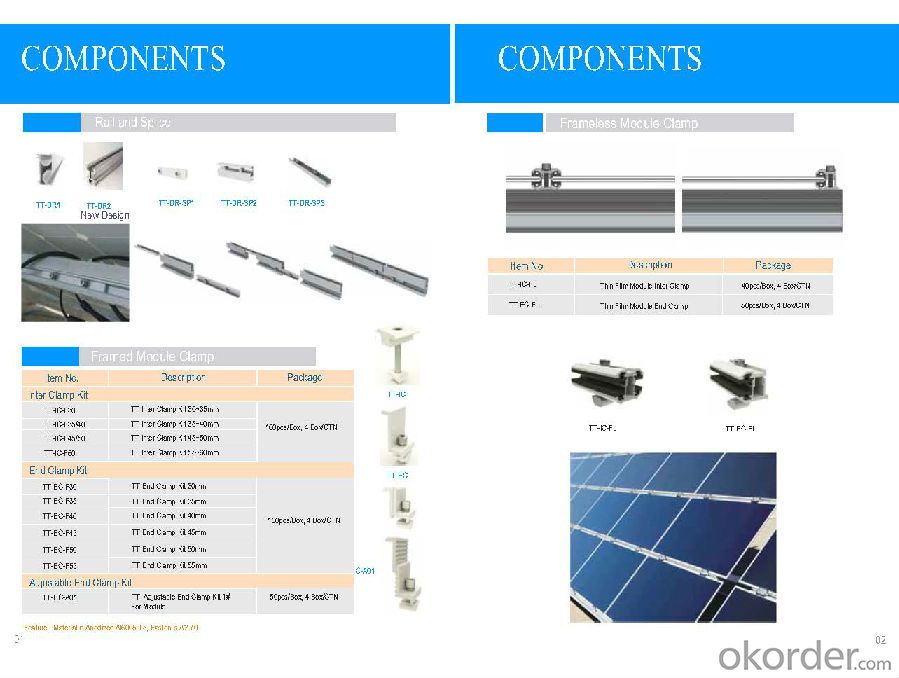
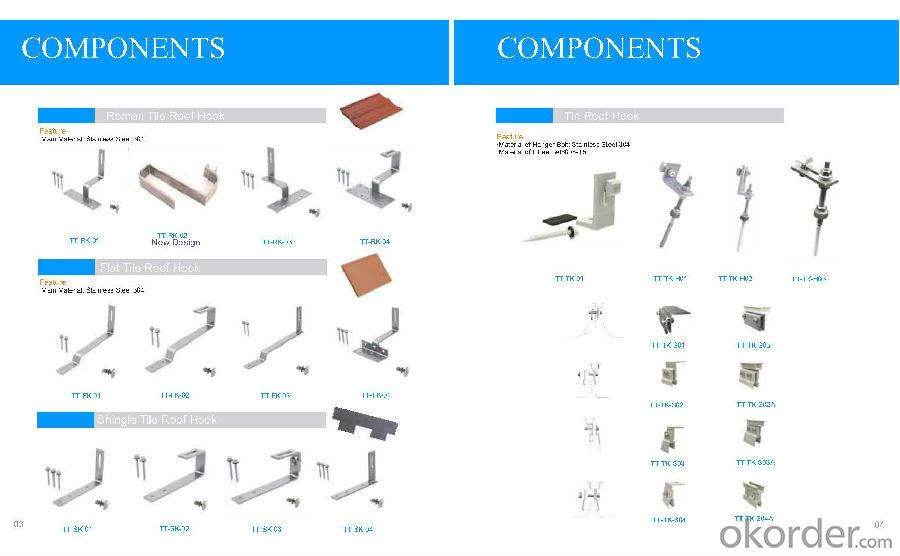
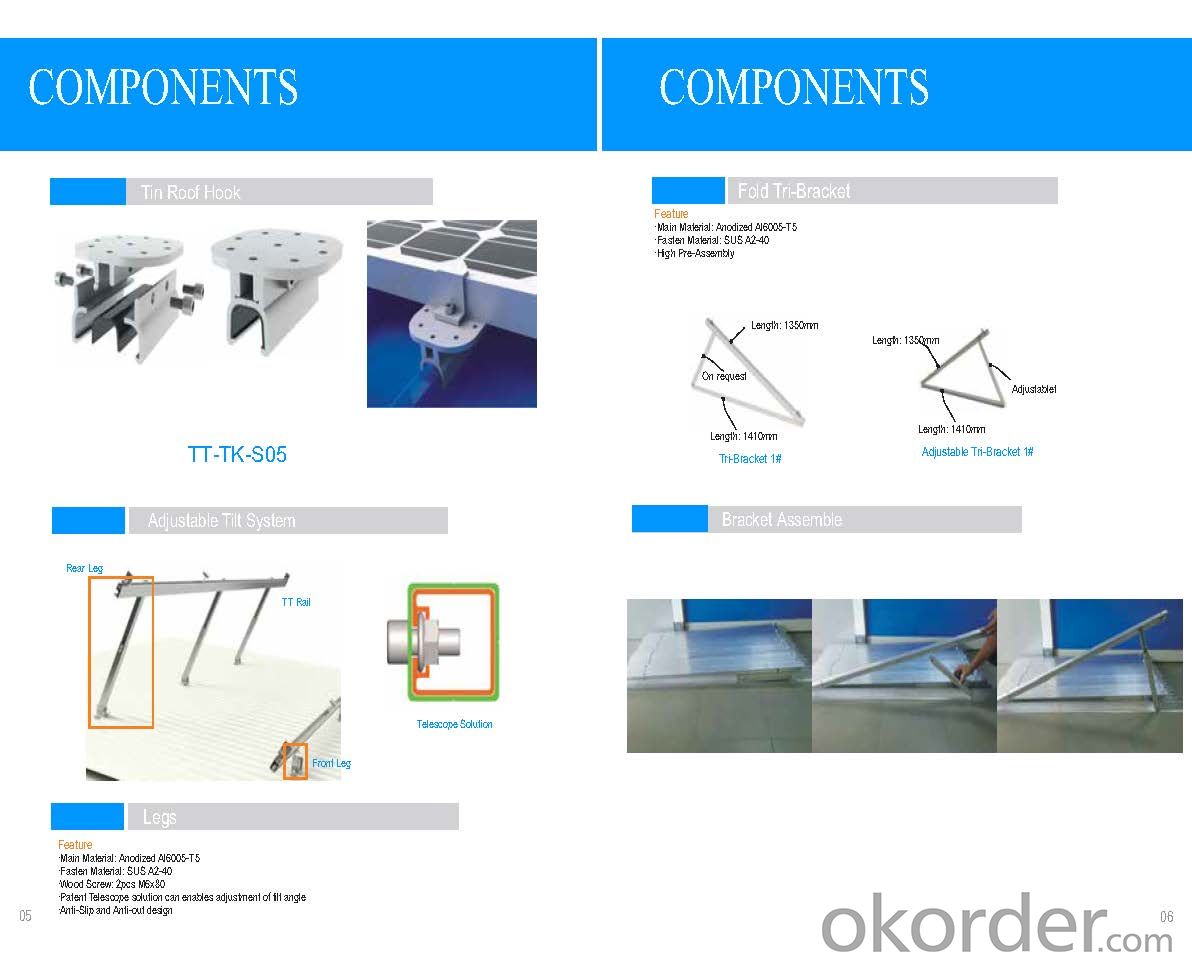
- Q: Can a solar mounting system be used with different types of solar panels?
- Yes, a solar mounting system can be used with different types of solar panels. Most solar mounting systems are designed to be versatile and compatible with various panel sizes and configurations, allowing for easy installation and integration regardless of the specific type of solar panels being used.
- Q: Are there any specific requirements for solar tracker compatibility when using a solar mounting system?
- Yes, there are specific requirements for solar tracker compatibility when using a solar mounting system. The solar mounting system should be designed to accommodate the movement and weight of the solar tracker. It should have a sturdy structure and be able to securely hold the tracker in place. The mounting system should also have the necessary wiring and connections to integrate with the tracker's control system. Additionally, the mounting system should provide proper tilt angles and orientation to optimize the performance of the solar tracker.
- Q: Are there different mounting systems for different types of solar panels?
- Yes, there are different mounting systems for different types of solar panels. The mounting system for a solar panel depends on various factors such as the type of panel (monocrystalline, polycrystalline, thin-film, etc.), the location where it will be installed (roof, ground, pole-mounted, etc.), and the specific requirements of the installation site. Different mounting systems are designed to accommodate these variations and ensure proper installation and optimal performance of the solar panels.
- Q: What is the expected maintenance cost over the lifetime of a solar mounting system?
- The expected maintenance cost over the lifetime of a solar mounting system can vary depending on various factors such as the quality of the system, its design, the environmental conditions it is exposed to, and the level of maintenance performed. However, on average, the maintenance cost for a solar mounting system is relatively low. It typically involves periodic inspections, cleaning of solar panels, and potential repairs or replacements of components due to wear and tear. Overall, the maintenance cost is relatively minimal compared to the long-term energy and cost savings that solar systems provide.
- Q: Can a solar mounting system be used in areas with unstable power grids?
- Yes, a solar mounting system can be used in areas with unstable power grids. Solar panels generate electricity independently of the power grid, so they can continue to produce energy even when the grid is unstable or experiencing frequent power outages. Additionally, installing a solar battery backup system can store excess energy for use during grid outages, providing a reliable source of electricity.
- Q: Are there any specific requirements for seismic bracing when using a solar mounting system in seismic areas?
- Yes, there are specific requirements for seismic bracing when using a solar mounting system in seismic areas. These requirements vary depending on the local building codes and regulations, but generally, seismic bracing is necessary to ensure the structural integrity and stability of the solar array during earthquakes. The specific requirements may include factors such as the location of the seismic area, the magnitude of potential earthquakes, the type of soil, and the weight and configuration of the solar mounting system. It is important to consult with a qualified structural engineer or local authorities to determine and meet the specific seismic bracing requirements for a solar installation in seismic areas.
- Q: Are there specific requirements for the roof to install a solar mounting system?
- Yes, there are specific requirements for the roof to install a solar mounting system. Some key factors include the roof's structural integrity, orientation and tilt angle, shading, and available space. The roof should be strong enough to support the weight of the solar panels and mounting system. It should also have sufficient space and minimal shade to maximize sunlight exposure. Additionally, the roof's angle and orientation should be suitable for optimal solar energy generation.
- Q: What is the difference between a fixed tilt and a tracking solar mounting system?
- A fixed tilt solar mounting system is stationary and fixed at a specific angle, typically tilted towards the sun. It remains in this position throughout the day, capturing sunlight at a consistent angle. On the other hand, a tracking solar mounting system is designed to follow the movement of the sun throughout the day. It adjusts its position to track the sun's path, maximizing the amount of sunlight it can capture. This allows it to capture more energy compared to a fixed tilt system, especially during mornings and evenings when the sun is at a lower angle.
- Q: Can a solar mounting system be used in areas with solar incentives for universities?
- Yes, a solar mounting system can be used in areas with solar incentives for universities. These incentives are designed to promote the adoption of solar energy and encourage renewable energy initiatives. By installing a solar mounting system, universities can benefit from these incentives, such as tax credits, grants, or feed-in tariffs, which can help offset the initial installation costs and provide long-term financial savings. Additionally, using solar energy aligns with the sustainability goals of universities, demonstrating their commitment to reducing carbon emissions and promoting environmental stewardship.
- Q: Are there any specific requirements for installing a solar mounting system on a tile roof?
- Yes, there are specific requirements for installing a solar mounting system on a tile roof. These requirements may vary depending on the type and condition of the tile roof. Some common requirements include ensuring that the roof structure can support the additional weight of the solar panels, using appropriate flashing and waterproofing methods to prevent leaks, and following the manufacturer's guidelines for installation on tile roofs. It is recommended to consult with a professional solar installer to ensure proper installation and compliance with local building codes.
Send your message to us
Best Solar Mounting System - TT-TK-S02A Solar Panel Mounting
- Loading Port:
- Shanghai
- Payment Terms:
- TT OR LC
- Min Order Qty:
- -
- Supply Capability:
- 50万套 set/month
OKorder Service Pledge
OKorder Financial Service
Similar products
Hot products
Hot Searches
Related keywords
